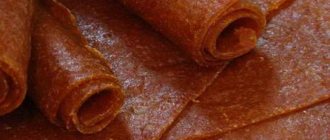Reasons for shrinkage
This is due to the characteristics of the fibers. Cotton is a light and fluffy material; after twisting, it produces loose threads that can stick together when exposed to moisture. The presence of synthetic fibers in the fabric also increases the likelihood of shrinkage.
To maintain the size of the item, you only need to observe the temperature regime. Items made from 100% cotton may shrink after washing on a boiling cycle. Drying in a machine drum is also detrimental to this material, because in this mode things are processed by a stream of hot air.
The nuances of the first wash
Most often, cotton shrinks after the first wash, when we forget to read the manufacturer's recommendations. But if you follow the recommendations, problems rarely arise in the future.
It is better to rinse new items in cool water before washing. This will prevent shedding and wash away the chemicals used on the fabric in the factory.
After rinsing, cotton can be washed either manually or in an automatic machine by setting a suitable program. Before washing, it is important to read the manufacturer's recommendations on the label.
The water temperature for the first treatment should not exceed 30 degrees. Spin and other functions (except drying) are set in normal mode.
In the future, you can use programs with water heating up to 60 degrees; at this temperature, cotton does not shrink.
Durable, inexpensive and comfortable
Cotton has conquered the world thanks to its unique properties. It is an interweaving of thin fluffy and soft fibers, slightly twisted around its own axis. The raw material is obtained from mature cotton fruits.
Properties of cotton fabric
Cotton has advantages and disadvantages. Knowing the rules for caring for this material, shortcomings turn into specific features that will not create problems.
Advantages:
- Strength, lightness, softness.
- Hypoallergenic.
- High hygroscopicity. Absorbs and wicks away sweat well.
- The material is warm due to its fine-fiber structure. Between the numerous fibers of the fabric, a lot of air is retained, which is the best heat insulator. That. The products retain body heat well.
- The fabric is affordable.
- Not damaged by insects.
Flaws:
- The material gets dirty easily and is difficult to wash.
- Shrinks after washing.
- White fabric turns yellow over time.
peculiarities:
- dries slowly;
- wrinkles;
- has average abrasion resistance.
Cotton fabrics: calico, chintz, cambric, poplin, twill, etc.
Choice of product
Cotton cannot be called a delicate fabric; it can be washed with any detergent. Dry and liquid powders and gels are suitable. For hand washing, regular laundry soap is often used.
Liquid products are easy to rinse out of the material and do not cause allergic reactions. At the same time, the washing quality of gels is not very high; they are not suitable for heavily soiled items.
If there are stubborn stains on the fabric, use powders or special stain removers.
Drying and ironing cotton items
For cotton products, both machine drying and the drying process on a radiator are categorically unsuitable.
In any of these cases, the fabric can easily shrink under the influence of high temperatures. You can hang clothes on special hangers near heating appliances. After washing, the items do not need to be twisted too much; they should be slightly wrung out, shaken and carefully hung on the clothesline, straightening out all the folds. It is best to dry wardrobe items in a draft, protecting them from direct sunlight.
It is best to iron cotton slightly damp, without allowing the items to dry out. If this happens, you should spray the fabric with water from a spray bottle while ironing. You can iron cotton clothes from both the back and front sides, but the iron temperature should not be higher than 200 degrees.
In general, caring for cotton items is quite simple. You just need to follow the instructions on the product label, wash and iron the clothes carefully and carefully. In this case, the fabric will never lose color, will not change size and will delight its owner for a long time.
Automatic wash
To wash cotton, use a special program, which is found in every machine. It involves intensive processing and thorough rinsing.

Before washing cotton in a washing machine, turn the clothes inside out, empty the pockets of debris and foreign objects, fasten the buttons and remove removable jewelry.
The prepared items are loaded into the machine drum so that it is no more than half full. Select the “cotton” (cotton) mode, if necessary, set the pre-soaking and additional rinsing function. Place the required amount of detergent and rinse aid into the cuvette and start the program.
To wash cotton, spin at maximum speed is acceptable.
After finishing washing, items are removed from the drum and hung to dry in a well-ventilated area.
Basic modes and washing times
At what temperature to wash cotton is already clear, but what mode should you choose? Washing machines have a specialized “Cotton” program. It is best suited for washing clothes made from cotton threads. Some machines are equipped with separate functions for colored or heavily soiled cotton, so the required mode is selected according to the type or soiling of the clothing.
It is worth noting that the “cotton” program is the longest of all. It can last 2-3 hours. The time usually depends on the amount of laundry placed in the machine.
Handwash
To do this, fill a basin with warm water and add washing powder to it. If you plan to treat with laundry soap, there is no need to use additional products.
The soiled items are immersed in the prepared water and left for 15-20 minutes. After soaking, the dirtiest areas are washed with a brush or hands, squeezing and releasing the fabric.
The lightest and least stained items are soaked first. After washing, the clothes are wrung out and transferred to another basin with clean water. Rinse several times until the water becomes completely clear. Wring out and hang out to dry.
Poorly rinsed cotton items may appear as white streaks after drying.
Features of washing white cotton
Light-colored cotton items can be washed using various bleaches, including chlorine-containing ones. It is not recommended to do this too often, as chlorine destroys the fibers and reduces the life of the fabric. However, if necessary, the procedure is carried out without much harm to the material.
The optimal temperature at which to wash cotton to prevent it from shrinking is 60 degrees. For white items, powders containing optical brighteners are actively used.

To remove yellowness from cotton items, add 2 tablespoons of hydrogen peroxide or 3 tablets of acetylsalicylic acid to the powder during washing.
Tips and videos
Let's study some simple recommendations that will help you better care for cotton products:
- It will be easier and faster to iron the laundry if it is slightly damp.
- To prevent clothespin marks from remaining on items after drying, they must first be turned inside out.
- You can remove stubborn stains from kitchen towels by soaking them in a solution of warm water (10 l), washing powder (4 tablespoons), turpentine (4 tbsp). This must be done for at least a day. After this time, the items are washed, dried, and ironed.
- A solution of ammonia (10 g), hydrogen peroxide (20 g) and water (5 l) will help you quickly get rid of yellowed stains on products. Soak the product for half an hour and wash with powder in the usual way.
- You can bleach items that have turned gray over time using boric acid (20 g) and water (10 l). Linen is soaked in the resulting solution and washed, using powder for white clothes.
- To prevent the towels from losing their softness, they are washed at medium temperature.
Boiling
Boiling is used depending on the structure of the fabric. For thin materials it is better not to use high temperatures. At the same time, for terry towels or other cotton products with a dense structure, it is recommended to carry out the procedure when heavily soiled or for disinfection.
Cotton is boiled with the addition of powder for 1-2 hours. After this, leave it in the same container until the water cools down. The items are then wrung out and put into the washing machine or rinsed by hand.
The water temperature for the main wash and rinse should be the same.
Drying
Drying of cotton products should occur naturally. In this case, it is hung on hangers (coats, shirts), a rope or on a folding dryer. At the same time, it is important to ensure that the bright rays of the sun do not fall on things. If there is nowhere to hide them, be sure to turn the items inside out before hanging them. This way it will be possible to preserve the color of the front part, preventing it from yellowing or fading.
I work in the household appliance repair industry. Extensive experience in restoring washing machines and dishwashers.

What to do if things shrink or stretch
As a rule, cotton shrinks quite slightly and returns to its original size after the first wear. If a major disaster occurs, you need to re-wet the fabric in warm or hot water, stretch it on an ironing board and iron it until completely dry.
You can wash cotton to make it shrink in hot water. It is best to use boiling. After completing the procedure, use special forceps to remove the tissue from the container and move it into a basin with cold water. Temperature changes cause fabric to shrink.
How to wash cotton without shrinking: preparatory stage

Cotton fabrics shrink easily, so do not wash it in hot water
How to properly prepare a cotton product for washing? First of all, you need to turn it inside out, empty everything from your pockets, fasten all the buttons, zippers and locks. In case of significant contamination, it is recommended to put the item in water for at least a day.
Important point! Products made from thin cotton fabric should be washed at a water temperature of up to 40 degrees.
Experienced housewives prepare the following solution for soaking cotton products. In five liters of warm water they dilute two spoons of washing powder and two spoons of turpentine. After soaking in this solution, the item washes off perfectly. Another recipe is also used: instead of turpentine, ammonia or hydrogen peroxide is added to the water. True, such solutions are very risky, because the fabric can lose its color. Therefore, it is recommended to first test it to see how it will react to a particular composition.
If you don’t want to take risks, then simply soak the cotton product in a regular powder solution. For this purpose, washing powder intended for heavy soiling is suitable. These days, such powder can be purchased at any hardware store. By the way, turpentine is much more difficult to find.
To wash items made from fine cotton, it is best to use powder that contains so-called enzymes. These are special biological components designed to remove stubborn stains and dirt from fabric fibers. True, you shouldn’t soak clothes in such powder for a long time.











